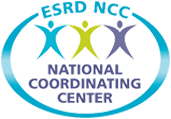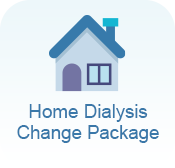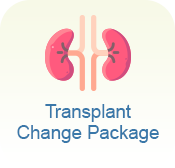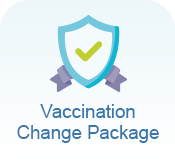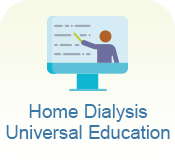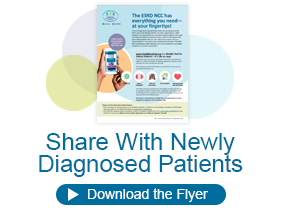- Getting Creative to Break Down Barriers to Dialysis Care in the Nursing Home
- Decreasing Peritonitis for Patients Receiving Peritoneal Dialysis in the Nursing Home
- Sample Infection Prevention and Quality Control Improvement Plan
- Hand Sanitizer Audit Tool
- Hand Sanitizer Audit Tool (Spanish)
- Decreasing Long-Term Catheter (LTC) Infections for Patients Receiving Hemodialysis in the Nursing Home
- NHSN Registration Videos
- Getting Creative to Break Down Barriers to Home Dialysis
- Understanding Home Hemodialysis (HHD) as an Option
- Understanding Peritoneal Dialysis (PD) as an Option
- Universal Staff Education
- Nephrologist Roundtable
- Peritoneal Dialysis: Another Option
- Peritoneal Dialysis: Another Option (Spanish)
- Home Dialysis Heroes Program
- Decreasing Dialysis Patient-Provider Conflict (DPC) Revised Modules, April 2024
- Decreasing Dialysis Patient-Provider Conflict (DPC) Toolkit
- Decreasing Dialysis Patient-Provider Conflict: December 2022 Addendum
- Dialysis Staff—Managing Retaliation
- Help Patients Understand Their Role in QAPI
- Help Patients Understand Their Role in QAPI (Spanish)
- Patient Engagement in Quality Assessment and Performance Improvement (QAPI)
- Module Part 2: Overcoming Barriers With QAPI
- Module Part 3: Quality Assessment and Performance Improvement (QAPI) Self-Survey
- Creating a Life Plan
- Module Part 2: Assisting Patients With Life Planning
- Module Part 3: Helping Patients Stay on Track With Their Life Plans
- Prepare an Emergency Kit Inspirational Poster
- Learn an Emergency Diet Inspirational Poster
- Getting Creative to Break Down Barriers to Transplant
- Better Than Dialysis Kidneys
- Better Than Dialysis Inspirational Poster
- Understanding the Journey from Referral to Transplant Waitlisting
- ESRD Treatment Choices Learning Collaborative
- Medicare Coverage of Kidney Dialysis and Transplant Services
- Medicare Coverage of Kidney Dialysis and Transplant Services (Spanish)
- Transplant Trailblazer Program
- Be Transplant Ready Inspirational Poster
- 2024 Research of Most Appropriate Vaccinations for Dialysis Patients
- Getting Creative to Break Down Barriers to Vaccinations
COVID-19
Flu
- What You Need to Know About the Flu Vaccine
- Get Your Flu Shot: Not Flu (Video)
- Roll Up Your Sleeve for Your Annual Flu Vaccine (Video)
- What Should You Do If You Get Flu? (Video)
- Key Facts About Flu Vaccines (Video)
- Get Your Shot: Not Flu (Flyer)
- Get Your Shot: Not Flu (Poster)
- Custom — Get Your Shot: Not Flu (Flyer)
- Custom — Get Your Shot: Not Flu (Poster)
- Get Your Shot: Not Flu (Spanish Flyer)
- Get Your Shot: Not Flu (Spanish Poster)
- Custom — Get Your Shot: Not Flu (Spanish Flyer)
- Custom — Get Your Shot: Not Flu (Spanish Poster)
- A Strong Defense Against Flu | Spanish
- Make a Strong Flu Recommendation
- Fight Flu Poster | Spanish
- Flu Vaccine: Get the Facts
- Take 3 Actions to Fight Flu Brochure
- Take 3 Actions to Fight Flu Poster
